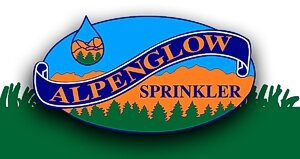Drip irrigation can be one of the best ways to grow healthy landscapes while conserving copious amounts of water. When installed correctly with an eye towards longevity and ease of maintenance, drip systems avoid the problems of excessive runoff, evaporation and especially the application of water where it’s not needed, all while keeping repair and renovation costs to a minimum. Unfortunately, many green industry professionals and do-it-yourself homeowners misunderstand the theory concerning the proper application of drip irrigation in the landscape.
One of the most common and egregious practices of installing drip irrigation follows the belief that if you can’t see the water, it's not working. This couldn’t be further from the truth and is not likely what the developers of drip irrigation intended when they developed the water-conserving practice in the 1960’s and 70’s. To reduce the evaporative rate of the irrigation water, it is best if one applies the water directly to the root system of the plant(s) intended to be watered. Targeting the water also tends to reduce the need for as much mechanical or chemical weed control surrounding soil, and some plants will benefit from the washing off of dust and debris from the foliage. However, this type of “drip irrigation” not only promotes unwanted weed growth but also tends to waste excessive amounts of water through evaporation and runoff. Many times, the most efficient manner of watering mass plantings is utilizing a matrix of pre-emitted drip pipe laid down in a uniform fashion. This eliminates the need to “punch”
in emitters and greatly reduces the chance of emitter expulsion or malfunction. Pre-emitted drip pipe comes in various application rates and spacings between emitters making it easy to complement the watering need of any landscape. Being prone to accidental damage is possibly the biggest disadvantage to using pre-emitted drip pipe as it can be hard to spot and is relatively easy to puncture. Note: When designing a drip system one should be mindful not to exceed the flow capacity of a given drip system by using excessive amounts of pre-emitted drip pipe or emitters.
Drip irrigation systems use gravity to pull the water down through the root zone of the plant material, as well as laterally utilizing capillary action. The distance of lateral movement depends greatly on the type of soil on site and should be considered when positioning the drip emitters. Capillary action typically allows one to position the emitters near the plant material in proximity to the undisturbed soil but near the edge of the root ball of the plant(s) intended to be watered. This will help promote root growth into the adjacent soil.The type of soil present on the site should also be considered when determining the best products to use.
